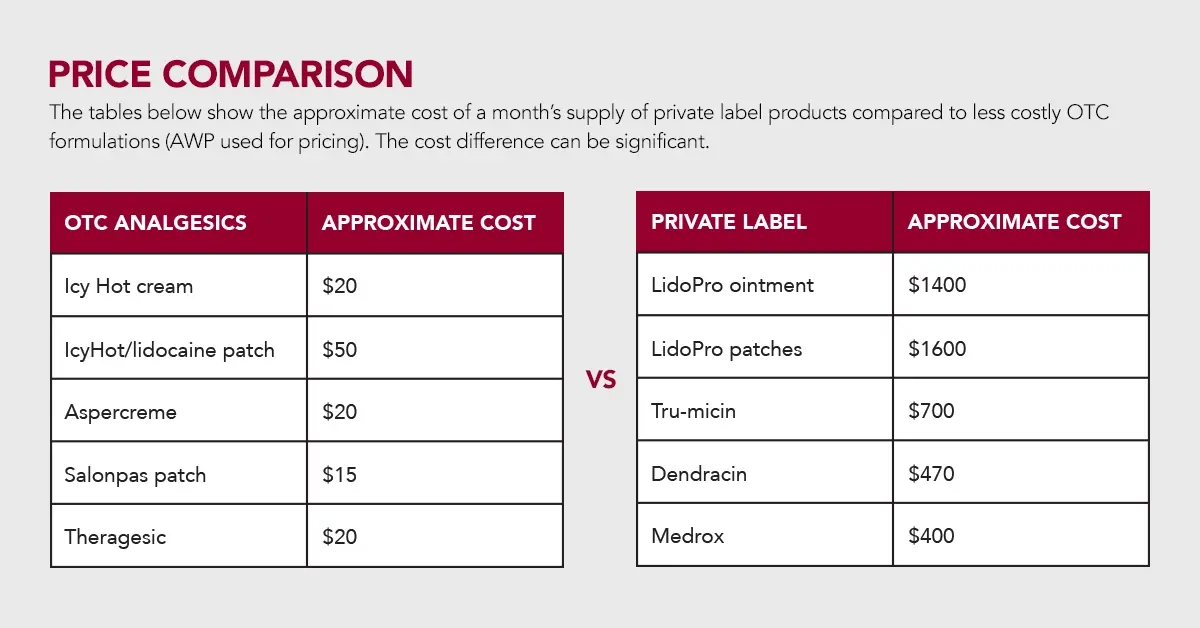Topical Analgesics in Workers Compensation Cases: An Overview



Topical analgesics are medications applied to the skin to relieve minor muscle and joint pain. The Workers Compensation Research Institute stated an increase in payment for topicals from 9 percent in 2015 to 19 percent in 2020[1]. Pharmacy operations have seen an increase in the use of topical analgesics being prescribed for pain over the past several years. These numbers are forecasted to continue to rise each year.
One study comparing an oral NSAID versus a topical NSAID concluded similar efficacy but significantly reduced the incidence of adverse side effects such as gastrointestinal issues(2,4). Topical products are available in a range of formulations from creams, ointments, lotions, patches, and combination products. There is a wide range of products from over-the-counter (OTC) to prescription. Below are several categories of topical analgesics that may be used by the injured worker to treat pain.

COUNTERIRRITANTS
Counterirrants work by producing surface irritation to the skin which can counteract any pain or discomfort in the area. Counterirritant products may work in one of several ways, including producing a cooling sensation, causing dilation of the blood vessels or capillaries which increases circulation to the area. Types of counterirritant products are methyl salicylate, camphor, menthol, and capsicum. Examples of OTC products containing these ingredients are IcyHot, BioFreeze, Tiger Balm, and Mineral Ice.
NSAIDs
Nonsteroidal anti-inflammatory drugs (NSAIDs) are medications that reduce inflammation and pain. Several topical NSAIDs have become very prominent in workers’ compensation over the past few years such as diclofenac. Diclofenac topicals are available as gels, solutions, and patches. Although the topical formulations of diclofenac will have similar side effect profiles as their oral counterparts, they may be more appropriate for patients who cannot tolerate oral NSAIDs and their side effects, such as upset stomach and increased risk of bleeding.
SALICYLATES
Salicylates is the drug class that contains aspirin and similar medications. Salicylates have antipyretic, anti-inflammatory and analgesic properties. Examples of topical salicylates are trolamine salicylate and methyl salicylate which can be found in OTC products such as Aspercreme, Bengay, and Flexall.
CAPSAICIN
Capsaicin is a compound found in capsicums, which give hot peppers their heat. Capsaicin can be used to treat topical pain, including nerve pain. A downside to this product is it may cause a warming or burning sensation on the skin which can be uncomfortable for the user but should decrease with use. It can also take several days to weeks to see results with these products.
ANESTHETICS
Topical anesthetics are products that will cause temporary numbness to the applied area. Examples of topical anesthetics are benzocaine, lidocaine and tetracaine. The most common topical anesthetic used in workers’ compensation is lidocaine, which is available in several different formulations including creams, gels, and patches.
Lidocaine is often used to treat nerve pain. Caution should still be used with lidocaine, especially in persons with liver or certain heart issues.

COMPOUNDS
A compounded medication is two or more ingredients combined to create a medication that is tailored to the needs of an individual patient. Compounded medications are often used in workers’ compensation to treat conditions such as inflammation, musculoskeletal pain, and neuropathic pain.
Compounded medications are not FDA-approved which means no one is verifying the safety, effectiveness, or quality of these medications5. There is a lack of studies and data available to compare the effectiveness of compounded medications to commercially available products.
There are situations in which a compounded medication may be necessary for a patient. These situations include allergies, adverse reactions to commercially available products, or for patients who are unable to tolerate
oral medications. Per the Official Disability Guidelines (ODG), compounded medications for pain are N drugs on the formulary and are not recommended as first-line therapy for topical or oral use. They should only be used for patients who are unable to be treated with an FDA- approved drug. In most situations, a patient should try commercially available medications (oral or topical) prior to using a compounded medication.
If a compound medication is determined to be appropriate, a review of the compound ingredients and the patient’s oral medications can prevent duplications in therapy. A compound may contain an ingredient that the patient is already taking orally. These types of duplications can increase the risk for unwanted side effects or adverse reactions. Caution should be used if an oral medication and compound ingredient are the same or from the same drug class.
THE RISE OF PRIVATE-LABEL TOPICALS
Private-label topicals are manufactured by independent companies and may contain a combination of readily available over-the-counter ingredients such as menthol, lidocaine, methyl salicylate, etc. The doses of these ingredients may be higher than in most OTC products.
In fact, many are higher than FDA recommended thresholds which could lead to adverse effects such as skin irritation or burns.
Since many of these private-label products are not prescription, they have not gone through any FDA testing to study the effects of these high-dose ingredients. The ODG classifies private-label topicals as not recommended first-line treatment options. Evidence shows inconclusive benefit, lack of benefit, or potential harm6.
Examples of these private-label analgesics are LidoPro ointment and patches, Medrox ointment, Terocin patches, and Dendracin. Private-label topicals may be promoted as superior to prescription or OTC products but there are no clinical studies/trials to prove these claims.
Another reason these products have a higher cost is they are often dispensed by physicians in-office or through specialty pharmacies. Workers’ compensation has seen a rise in prescriber dispensing which usually involves a higher cost to the insurer.
With such a wide variety of topical analgesics comes a wide range of prices. Many of the OTC topical analgesics can be much less costly than prescription products, however, there are some products, specifically private- label topicals, that can be upwards of hundreds or even thousands of dollars a month.

REFERENCES
[1] Thumula V, Liu TC. Topical analgesic use in workers’ compensation. Workers’ Compensation Research Institute. Aug 26, 2021 https://www.wcrinet.org/reports/topical-analgesic-use-in-workers-compensation.
[2] Tugwell PS, Wells GA, Shainhouse JZ. Equivalence study of a topical diclofenac solution (pennsaid) compared with oral diclofenac in symptomatic treatment of osteoarthritis of the knee: a randomized controlled trial. J Rheumatol. 2004 Oct;31(10):2002-12. PMID: 15468367.
[3] Nudo S, Jimenez-Garcia JA, Dover G. Efficacy of topical versus oral analgesic medication compared to a placebo in injured athletes: A systematic review with meta-analysis. Scand J Med Sci Sports. 2023 Oct;33(10):1884-1900. doi: 10.1111/sms.14418. Epub 2023 Jun 6.PMID: 37278322.
[4] Derry S, Conaghan P, Da Silva JA, Wiffen PJ, Moore RA. Topical NSAIDs for chronic musculoskeletal pain in adults. Cochrane Database Syst Rev. 2016 Apr 22;4(4):CD007400. doi: 10.1002/14651858.CD007400.pub3. PMID: 27103611; PMCID: PMC6494263.
[5] Compound and the FDA: Questions and Answers.FDA US Food and Drug Administration. https://www.fda.gov/drugs/human-drug compounding/compounding-and-fda-questions-and-answers. Accessed 1/29/24.
[6] ODG by MCG. Pain: Topicals, private-label. Available: http://odgbymcg.com. Accessed 1/29/24.
ADDITIONAL RESOURCES
This white paper was prepared by Carlisle Medical in collaboration with staff pharmacist Heidi Dufrene, Pharm.D. Carlisle Medical has more than 43 years of experience as a leader in healthcare cost containment to the workers’ compensation industry. Our company assists insurance carriers, third-party administrators and employers to significantly reduce their workers’ compensation costs. Our experienced staff of licensed pharmacists and nurses can assist companies with injuries ranging from minor to catastrophic.
For more information, please contact us.
**The information, including but not limited to, text, graphics, images and other material contained in this white paper are for informational purposes only. No material in this white paper is intended to be a substitute for professional medical advice, diagnosis or treatment. Always seek the advice of your physician or other qualified healthcare provider with any questions you may have regarding a medical condition or treatment and before undertaking a new healthcare regimen, and never disregard professional medical advice or delay in seeking it because of something you have read in this document.









